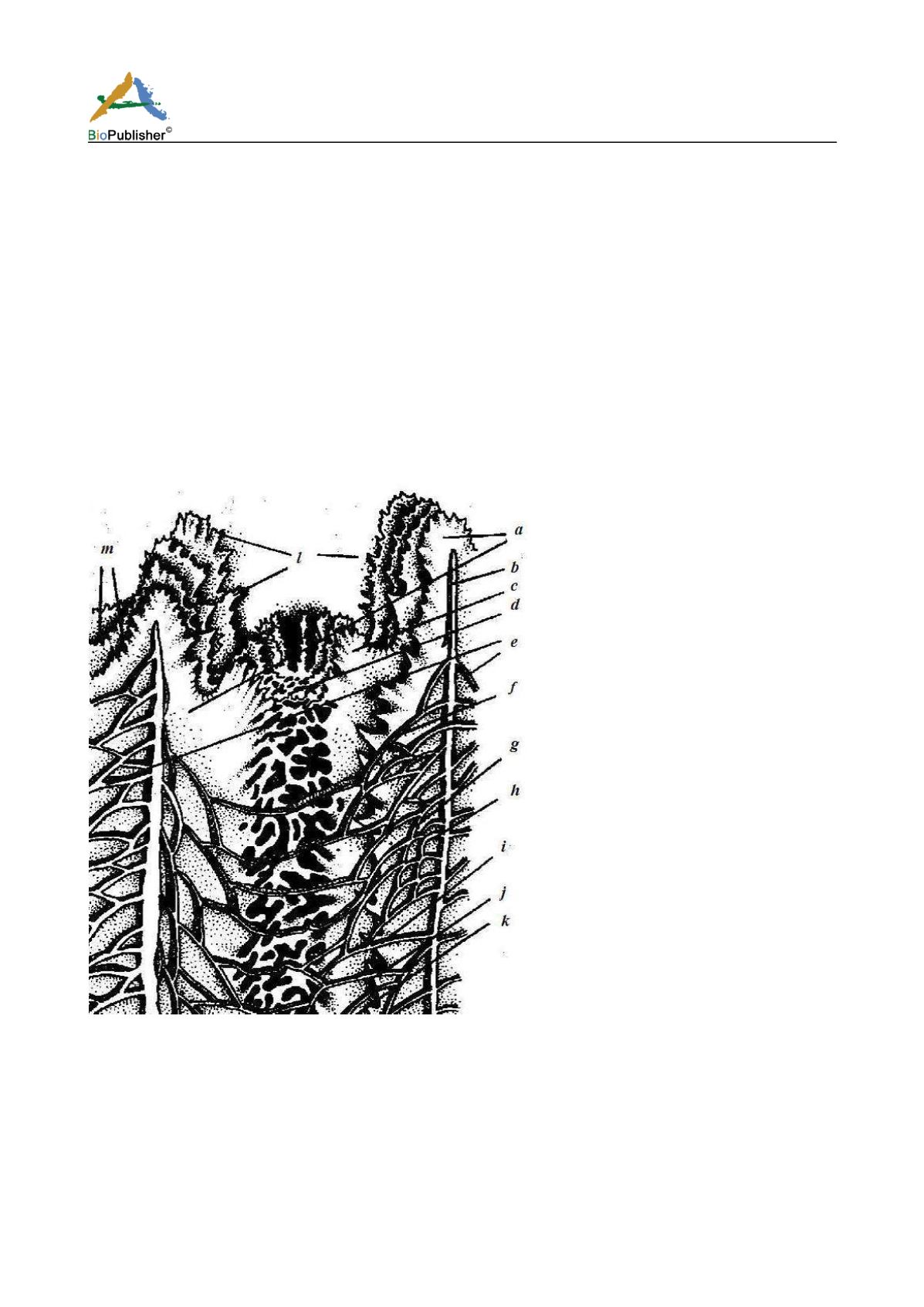
International Journal of Marine Science, 2016, Vol.6, No.14, 1-10
5
be formed in a Faviid calice. These circles are called pseudosynapticulae, and almost all of them have a distinct
indentation – a depression above the columella.
2.3 Horizontal skeletal elements
Faviidae have rather well developed horizontal skeletal elements: tabulae or dissepiments. Tabulae may be
complete or incomplete, convex or concave, rarely with additional lamellae. Dissepiments formed inside the
corallite between septa are called endothecal. They are formed by large (up to 5-7 mm), medium (3-5 mm) or
small (less than 3 mm) laminae, bulging in various degrees forming vesicles. Dissepimental laminae can be
variously oriented within the corallite cavity: with their convexity upwards towards the calice (horizontal),
towards the axis (inclined), or towards the corallite axis (vertical). Dissepiments, separating neighboring corallites,
often form a vertical row of horseshoe-shaped lamellae. Exothecal dissepiments are formed among (between)
corallites and costae. Dissepimental laminae are laid frequently (15-20 per 1 cm of corallite length), moderately
frequently (10-15) or rarely (less than 10). They can be thin (less than 0.2 mm) or thick (more than 0.3 mm).
Several dissepimental rows, completely filling a corallite cavity from the wall to columella, are called a
dissepimentarium (Figure 3).
Figure 3 Skeletal elements of corallites Faviidae. a – septae, b – wall, c – paliform lobes, d –columella, e – coenosteum (exothecal
dissepiments), f-k – endothecal dissepiments, h – horseshoe, i – cystiphore, l – costae, m – septal dentation (part after Veron, 1986).
3 Discussion
3.1 Taxonomic peculiarities
As can be seen from the review of Faviidae systematization history, taxonomic problems have existed at higher
and lower taxonomic levels. There were different opinions and disputes about the integrity of the Faviidae family
and on its value, and on the names of genera included in it. There was no less uncertainty in species identification,
as well as at establishing their placement in one or the other genus. I think many researchers can repeat after


